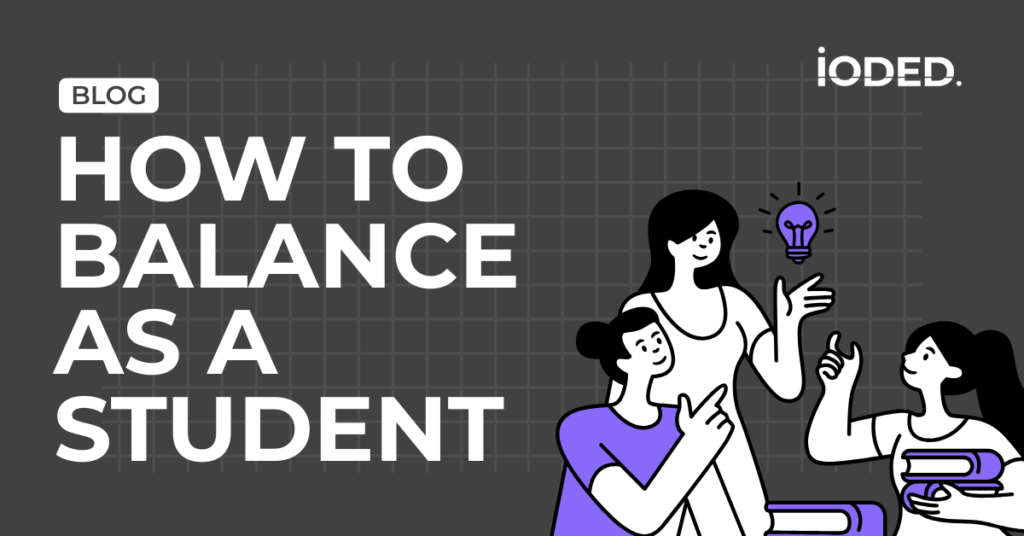How to Balance Learning, Practice, and Earning as a Student

In today’s competitive world, students are expected to learn new skills, gain practical experience, and also start earning early. Balancing all three may seem overwhelming—but with the right structure, it’s not only possible; it’s a smart strategy to grow.
This blog will help you understand how to balance learning, practicing your skills, and earning money—even while studying full-time.
Why Balancing Learning, Practice, and Earning Is Important
Balancing these three elements sets the foundation for a strong and independent career. Learning gives you knowledge, practice makes you capable, and earning gives you exposure to the real world.
If you only focus on one and ignore the rest, your growth becomes limited. For example, learning without applying makes you slow. Earning without learning leads to burnout or poor work quality. So, all three are equally important.
Step 1: Know Which Phase You’re In
1. Learning Phase
This is when you consume content—watch YouTube videos, take courses, read blogs, and understand tools. It’s where you build your foundation.
Many students stay stuck in this phase and keep consuming information without applying it. But learning is only the first step.
2. Practice Phase
This phase is all about applying what you’ve learned. That could be through personal projects, mock work, internships, or helping friends.
Here, you make mistakes, improve, and become confident with tools and processes.
3. Earning Phase
This is when you start taking up paid internships, freelancing projects, or even selling services. It tests how ready you are to deal with clients or deadlines.
Real growth happens when you move between all three, not when you stay in just one.
Step 2: Use the 50–30–20 Rule to Manage Time
If you’re a full-time student, you likely have 3–4 hours daily for self-growth. The 50–30–20 rule helps you divide this time effectively.
- 50% for Learning
Spend half your time learning through videos, online courses, or articles. Focus on one skill at a time to avoid confusion and burnout.
- 30% for Practice
Apply what you’re learning by doing mini-projects or experimenting with tools. Practice is where learning turns into real skill.
- 20% for Earning
Use the remaining time to look for gigs, internships, or small paid tasks. It builds confidence and teaches real-world communication.
Step 3: Choose One Core Skill to Focus On
Trying to learn too many things at once will slow you down. Pick one skill, learn it deeply, and grow around it.
For example, if you choose digital marketing, focus on content, ads, SEO, and tools related to it—not random editing or coding.
Here are some examples:
| Core Skill | Practice Example | Earning Example |
| Web Development | Build a personal blog or landing page | Freelance portfolio site for someone |
| Graphic Design | Design posters or carousels | Instagram content for small brands |
| Digital Marketing | Run mock ad campaigns | Manage pages or create social posts |
| Content Writing | Write weekly blogs or case studies | Freelance article writing |
| Video Editing | Re-edit old videos from YouTube | Edit reels or short-form videos |
Choose one, stick with it for at least 3 months, and go deep.
Step 4: Learn by Doing Projects
Doing real or mock projects helps you combine learning and practice naturally. It gives you material for your portfolio and improves your confidence.
Instead of just watching courses, try these:
- Build a website for your resume
- Create brand designs for a fictional startup
- Write ad copies for trending products
- Run a free campaign for a friend’s business
- Record and edit a case study reel
Projects teach problem-solving and help you understand where you stand.
Step 5: Find Early Earning Opportunities in Your Circle
You don’t need big clients to start earning. Look into your own network—college groups, friends with startups, or local businesses.
Offer services like:
- Poster design for ₹300
- Social media post writing for ₹500
- Resume website for ₹1000
These early gigs won’t make you rich but will give you experience. They also teach you how to talk to clients, take feedback, and meet deadlines.
Step 6: Create a Weekly Schedule That Works for You
You need a structure to stay consistent. Here’s an example for students:
| Day | Focus Area |
| Monday | Learning (1 hour) + small practice |
| Tuesday | Learning + project work |
| Wednesday | Learning + apply for internships |
| Thursday | Practice (design, write, edit, etc.) |
| Friday | Freelance task or mock project |
| Saturday | Extra time for earning work |
| Sunday | Reflect, rest, and plan ahead |
Consistency beats intensity. Even 1 focused hour daily builds serious skills over time.
Step 7: Use the Right Tools to Stay On Track
A few free tools can make your workflow more organized and professional:
- Notion or Trello – Organize your tasks and goals
- Clockify – Track how you spend time on learning or gigs
- Google Calendar – Block specific hours for skill-building
- Canva / Figma / VS Code – For design and development practice
- Internshala, LinkedIn, Upwork – Explore internships or freelance tasks
Being organized saves time and gives you clarity.
Final Thought: Progress Over Perfection
Many students wait to feel “fully ready” before applying for work—but that moment never comes. Start small, stay consistent, and accept that learning, practicing, and earning go hand in hand.
Even if you give just 60–90 minutes a day for your growth, you’ll be far ahead in 6 months.
So start now. Learn something today, try it tomorrow, and pitch for work next week. That’s how real progress is made.